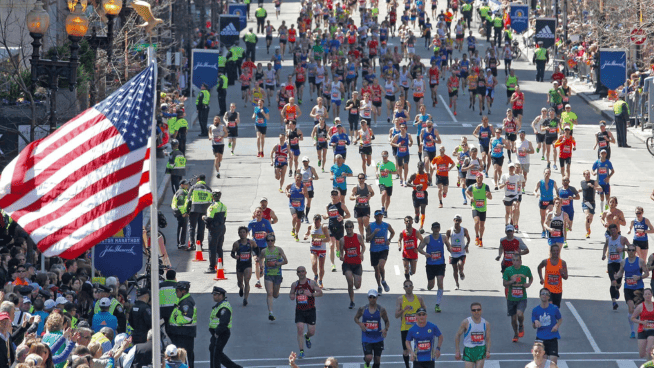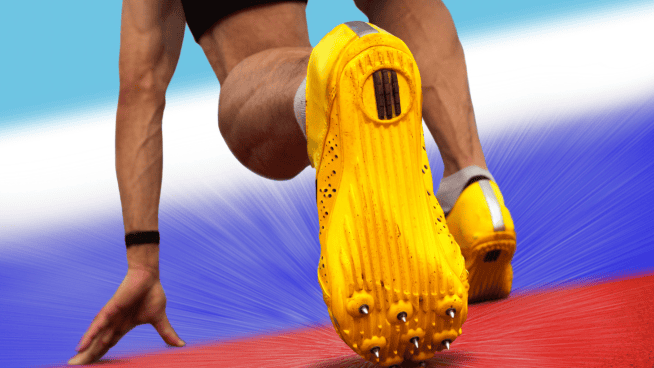Get Stronger With a Wave Loading Workout Program
![]()
Wave loading is a powerful tool to help athletes peak their maximal strength and burst through training plateaus. It influences speed, agility, hitting, throwing, kicking—in other words, it is a factor in almost every athletic skill.
For most sports, I try to peak both strength and power as the season approaches. This means that I amp up the training of both starting about six weeks from the beginning of the season. My thinking is that one part of training increases maximal strength, while the other part learns to use that strength.
RELATED: How to Build Maximal Strength, the True Measure of Brute Force
One of my tools during this six-week peaking phase is called wave training. It consists of two or more “waves” of loading. Each wave comprises an ascending set. In other words, subsequent sets in a wave involve more weight and less volume. After the first wave, the second wave backs the weight way off at the start, but it’s still a little higher than what the first wave started out with. Then sets in the second wave increase in weight and decrease in volume as the wave progresses. This is repeated if there are more waves.
For example, let’s say that an athlete can squat 300 pounds. That athlete may be lifting with three waves on a given day. The table below shows the repetitions, percentage of 1-RM (1-Rep Maximum), and the weights the athlete will lift on each of three waves.
| Set 1 | Set 2 | Set 3 | |
| Wave 1 | 8@80% (240) | 5@85% (255) | 2@90% (270) |
| Wave 2 | [email protected]% (245) | [email protected]% (260) | [email protected]% (275 |
| Wave 3 | 6@85% (255) | 3@90% (270) | 1@95% (285) |
As you can see, each wave consists of three sets with increasing weight. At the end, the athlete will have performed nine sets of work on the Squat.
RELATED: Key Differences Between Off-Season and In-Season Training
Wave training allows an athlete to perform a great deal of concentrated strength work in a short time. The wave nature of the training allows for a lot of volume, but it also allows for frequent breaks, when the athlete can back off and regain psychological focus.
On the other hand, this type of training is extremely intense. There’s a lot of wear and tear on the body.
With this in mind, here are some things to keep in mind when incorporating wave training into your program:
- Wave training is not a substitute for maximal strength training to develop your foundation. To me, strength is so important that it has to be trained yearround.
- It can only be sustained for short periods of time: 4-8 weeks is the ideal time for using this type of training. Using it for longer periods risks overtraining and injuries.
- It’s too intense for the season: Athletes in-season have so many demands on their ability to recover that this type of training is too intense. Using this extensively in-season has a negative impact on performance and may cause injury.
- This is not training to failure: Training for maximal strength is about training the nervous system. Training to failure with this type of training has the potential to burn an athlete out, so there needs to be 1-2 reps left in the tank on each set.
- Pick one exercise per session to focus on. Only do wave training with one exercise per session. More than that creates a really long training session and dramatically increases the risk of injury and overtraining.
Below is an example of how to incorporate this type of training into a six-week training block for a collegiate athlete. The block is organized into four days of training per week. Two are focused on maximal strength and two on power. All workouts are total-body workouts.
Day One (Maximal Strength)
- Back Squats: 1×8@80%, 1×5@85%, 1×2@90%, 1×[email protected]%, 1×[email protected]%, 1×[email protected]%, 1×6@85%, 1×4@90%, 1×1@95%
- Romanian Deadlifts: 3×4-8
- Incline Press: 3×4-8
- Bent-over Rows: 3×4-8
- Standing Military Press: 3×4-8
Day Two (Power)
- Snatch Pull + Power Snatch: 3×4+3@70%
- Power Clean: 3×3@70%
- Push Jerk: 3×3@70%
Day Three (Off)
Day Four (Maximal Strength)
- Front Squats: 3×4-8@85%
- Deadlifts: 3×4-8@85%
- Bench Press: 1×8@80%, 1×5@85%, 1×2@90%, 1×[email protected]%, 1×[email protected]%, 1×[email protected]%, 1×6@85%, 1×4@90%, 1×1@95%
- Kettlebell Rows: 3×4-8 each arm
- Kettlebell Press: 3×4-8 each arm
Day Five (Power)
- Power Snatch, Hang, 3 Positions (above the knee, knee, below the knee): 3×1+1+1@70%
- Power Clean + Push Jerk: 3×3+2@70%
- Clean Pulls: 3×4@80%
RECOMMENDED FOR YOU
MOST POPULAR
Get Stronger With a Wave Loading Workout Program
![]()
Wave loading is a powerful tool to help athletes peak their maximal strength and burst through training plateaus. It influences speed, agility, hitting, throwing, kicking—in other words, it is a factor in almost every athletic skill.
For most sports, I try to peak both strength and power as the season approaches. This means that I amp up the training of both starting about six weeks from the beginning of the season. My thinking is that one part of training increases maximal strength, while the other part learns to use that strength.
RELATED: How to Build Maximal Strength, the True Measure of Brute Force
One of my tools during this six-week peaking phase is called wave training. It consists of two or more “waves” of loading. Each wave comprises an ascending set. In other words, subsequent sets in a wave involve more weight and less volume. After the first wave, the second wave backs the weight way off at the start, but it’s still a little higher than what the first wave started out with. Then sets in the second wave increase in weight and decrease in volume as the wave progresses. This is repeated if there are more waves.
For example, let’s say that an athlete can squat 300 pounds. That athlete may be lifting with three waves on a given day. The table below shows the repetitions, percentage of 1-RM (1-Rep Maximum), and the weights the athlete will lift on each of three waves.
| Set 1 | Set 2 | Set 3 | |
| Wave 1 | 8@80% (240) | 5@85% (255) | 2@90% (270) |
| Wave 2 | [email protected]% (245) | [email protected]% (260) | [email protected]% (275 |
| Wave 3 | 6@85% (255) | 3@90% (270) | 1@95% (285) |
As you can see, each wave consists of three sets with increasing weight. At the end, the athlete will have performed nine sets of work on the Squat.
RELATED: Key Differences Between Off-Season and In-Season Training
Wave training allows an athlete to perform a great deal of concentrated strength work in a short time. The wave nature of the training allows for a lot of volume, but it also allows for frequent breaks, when the athlete can back off and regain psychological focus.
On the other hand, this type of training is extremely intense. There’s a lot of wear and tear on the body.
With this in mind, here are some things to keep in mind when incorporating wave training into your program:
- Wave training is not a substitute for maximal strength training to develop your foundation. To me, strength is so important that it has to be trained yearround.
- It can only be sustained for short periods of time: 4-8 weeks is the ideal time for using this type of training. Using it for longer periods risks overtraining and injuries.
- It’s too intense for the season: Athletes in-season have so many demands on their ability to recover that this type of training is too intense. Using this extensively in-season has a negative impact on performance and may cause injury.
- This is not training to failure: Training for maximal strength is about training the nervous system. Training to failure with this type of training has the potential to burn an athlete out, so there needs to be 1-2 reps left in the tank on each set.
- Pick one exercise per session to focus on. Only do wave training with one exercise per session. More than that creates a really long training session and dramatically increases the risk of injury and overtraining.
Below is an example of how to incorporate this type of training into a six-week training block for a collegiate athlete. The block is organized into four days of training per week. Two are focused on maximal strength and two on power. All workouts are total-body workouts.
Day One (Maximal Strength)
- Back Squats: 1×8@80%, 1×5@85%, 1×2@90%, 1×[email protected]%, 1×[email protected]%, 1×[email protected]%, 1×6@85%, 1×4@90%, 1×1@95%
- Romanian Deadlifts: 3×4-8
- Incline Press: 3×4-8
- Bent-over Rows: 3×4-8
- Standing Military Press: 3×4-8
Day Two (Power)
- Snatch Pull + Power Snatch: 3×4+3@70%
- Power Clean: 3×3@70%
- Push Jerk: 3×3@70%
Day Three (Off)
Day Four (Maximal Strength)
- Front Squats: 3×4-8@85%
- Deadlifts: 3×4-8@85%
- Bench Press: 1×8@80%, 1×5@85%, 1×2@90%, 1×[email protected]%, 1×[email protected]%, 1×[email protected]%, 1×6@85%, 1×4@90%, 1×1@95%
- Kettlebell Rows: 3×4-8 each arm
- Kettlebell Press: 3×4-8 each arm
Day Five (Power)
- Power Snatch, Hang, 3 Positions (above the knee, knee, below the knee): 3×1+1+1@70%
- Power Clean + Push Jerk: 3×3+2@70%
- Clean Pulls: 3×4@80%











